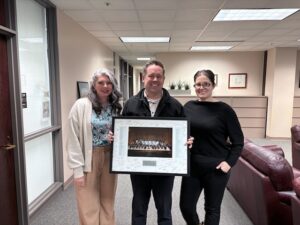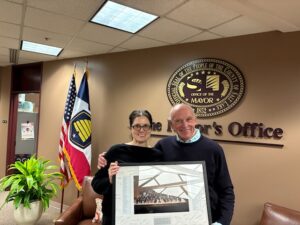
Utah Symphony Delegate Lynn Rosen
We often talk about labor organization in abstract, “what-if” terms, but recent events in Utah show how the power of a unified and organized community can fight to preserve our Salt Lake cultural heritage. This article demonstrates the collective mindset of musicians, community—and even politicians and board members—in the fight against losing our beloved Abravanel Hall and how a motivated and organized bargaining unit can use its collective voice in powerful ways.
History
Abravanel Hall was built in 1979 as part of the 1976 Bicentennial project in downtown Salt Lake, which included the Capitol Theatre and the Salt Lake Arts Center. Symphony Hall was renamed Abravanel Hall in 1984 to honor Maestro Maurice Abravanel, Utah Symphony music director for 32 years. Architects from the top-ranked firm of FFKR were consulted to build a hall specifically to put on concerts by the Utah Symphony, which needed a home at the time.
Imagine our shock on April 29, 2024, when CEO Steven Brosvick informed members of the Utah Symphony that Abravanel Hall was expected to be razed to make way for a Sports, Entertainment, and Convention district to house a National Hockey League team relocating from Arizona to Salt Lake City. Organization-wide, no one was sure what steps to take. Needless to say, we musicians knew that we needed to do something to push back.
At an emergency orchestra meeting on May 6, we elected a Campaign Committee, chaired by Principal Percussionist Keith Carrick, which would work in conjunction with Orchestra Committee Chair Karen Wyatt. Other committee members included Principal Bassoonist Lori Wike, who was instrumental in research and preservation to get Abravanel Hall on the National Register of Historic Places, and violinist David Porter, the musicians’ spokesperson.
Reaching out to Elected Officials
Immediately upon forming the committee, Carrick and Wyatt began contacting elected officials. It became clear at the beginning that management was in too difficult a position to take an official and public position on the hall’s future, so this outreach from musicians proved crucial. The task looked impossible as Salt Lake County operates the hall and the Utah Symphony is its main tenant. As Wike says, “basically we were faced with this disaster with seemingly insurmountable odds of stopping it. But we organized and we stopped it.”
Clearly, organizing was important, but Carrick found this to be different from a normal labor dispute. “In a labor dispute, you have your community, you have your management and the musicians,” he explains. “You’re trying to organize your musicians to reach out to those three different groups and get messages to them, or get them to change their minds or their tactics.
“In this case, the primary people who would make those decisions were political actors. We still had to organize, not like we were going to be opposing our management, but to utilize our management and try to come to some other sort of agreement with them on how to approach this. Our main opposition was the politicians, and that is the main difference between this and a typical labor dispute.”
For Carrick, this meant that there were more conversations and a lot of behind-the-scenes work. While “politics” are involved even in normal labor disputes between the musicians and board, he found that “in this case, it was real politics—real politicians.”
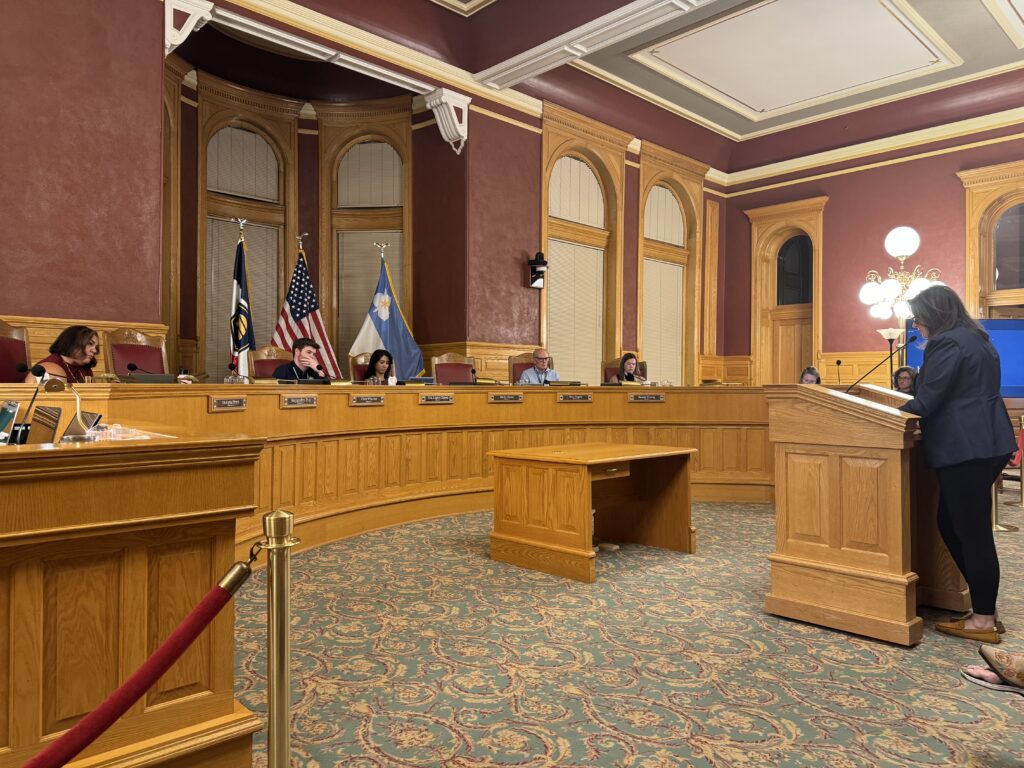
Orchestra Committee Chair Karen Wyatt speaks at a meeting of the Salt Lake City Council on October 1, 2024 at which the Council affirmed their support for Abravanel Hall.
Unlike other orchestras with recent renovations, such as San Diego, Saint Louis, and Cincinnati, where preparations were made months in advance for fundraising campaigns and for finding alternate venues during the construction, there was no plan in place for what would happen to the Utah Symphony, only vague promises that something would work out somehow.
On May 4, Utah Youth Symphony violinist Jack Clark created a petition to Save Abravanel Hall on Change.org after hearing about the plight of the hall from UYS conductor Barbara Scowcroft (also a Utah Symphony violinist and a member of the Campaign Committee). As of today, this petition has over 50,000 signatures. Only five days after our initial meeting with management, we had already found ourselves overwhelmed with broad support for preserving our hall.
The petition became a big deal. Generally, people tend to ignore such petitions, but once it hit the news cycle, it became much more powerful. “Every time we sat down with [the other side], we told them how many more signatures we had,” Carrick recalls.
In terms of outreach to public officials, musicians attended meetings to advocate for our performance space and specifically to nominate Abravanel Hall to the National Register of Historic Places.
On May 28, the process was begun to nominate Abravanel Hall to the National Register of Historic Places, and on July 15, a final draft of the National Register Nomination was completed in record time—48 days—by preservationist and Historic Landmark Commissioner Adrienne White.
Reaching out to the public
Early on in the campaign, musicians reached out to the public and celebrities to spread the word further. Public groundswell—including Clark’s petition—likely influenced our politicians, creating a widespread message of support to preserve the hall.
Cellist John Eckstein contacted Composer John Williams, calling Williams “the most respected and beloved musician of our time.” Eckstein recalled that former Utah Symphony trombonist Jim Nova (now with the Pittsburgh Symphony) had worked with Williams previously and asked if Jim could reach out to Williams. The result was a beautifully written endorsement for saving the hall.
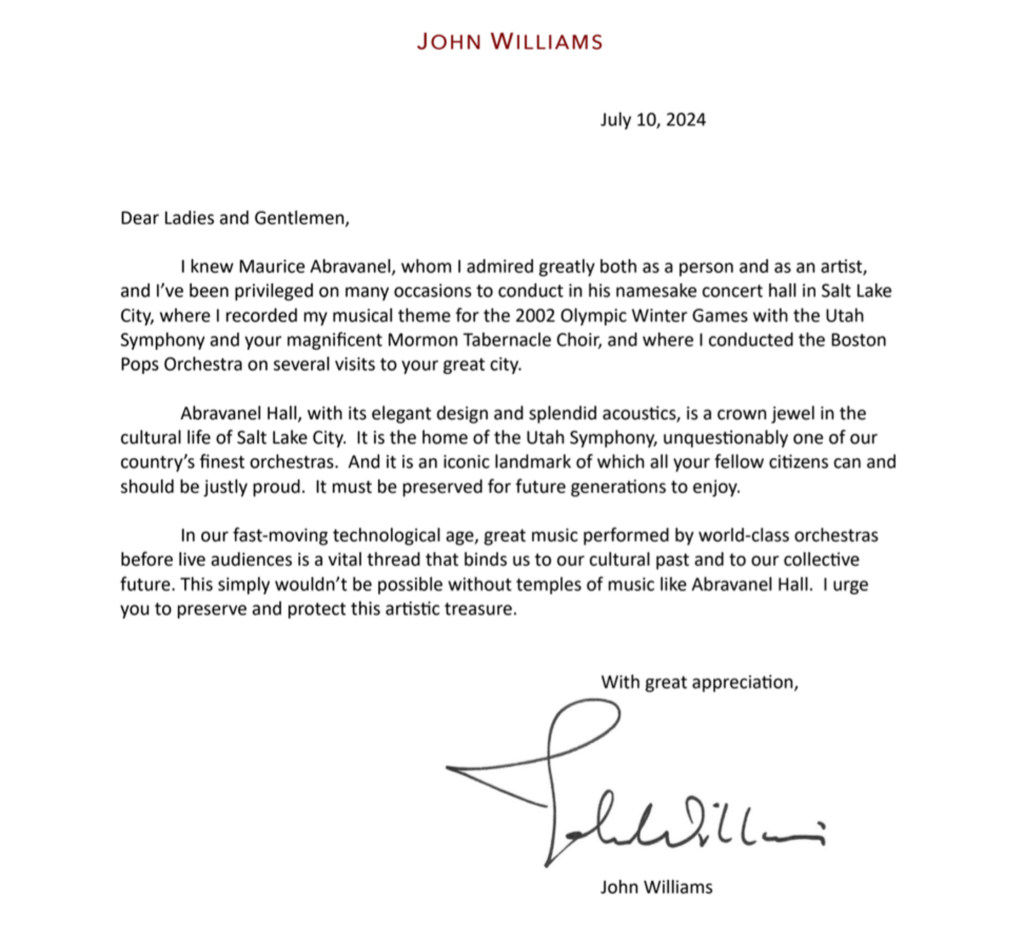 David Porter’s role in PR was to drum up as much press coverage as possible and be the one who would speak to the press. He set interviews with local Salt Lake publications and radio stations and was also able to reach out to the New York Times.
David Porter’s role in PR was to drum up as much press coverage as possible and be the one who would speak to the press. He set interviews with local Salt Lake publications and radio stations and was also able to reach out to the New York Times.
“I was reading an article about Ryan Smith in the New York Times about the hockey team and I felt like it gave an incomplete appraisal of what was happening. And so I just emailed [the reporter],” recalls Porter. After many emails back and forth, “he said, ‘I’m interested; send me everything you have.’”
Porter continues, “What was remarkable about our efforts [was that] we have a lot of individuals in the orchestra with singular talents. I felt that the committee, as well as many musicians outside of the committee, recognized that certain people were going to be good at certain things, and they really allowed those people to do what they did best. And then everybody came together and coalesced with an enormous amount of information and pull, politically. I was just really impressed with how the musicians utilized their individual skills in a way that was organized and economical. Because we had very little time and we had to be aggressive without coming across as spoiled or entitled.”
Violinist Becky Johnson contacted KSL news anchor Carol Mikita and all the ICSOM and Utah Symphony Emeritus musicians. County Council member Jim Bradley spoke with Principal Clarinetist Tad Calcara about his instrumental role in naming Abravanel Hall for the esteemed conductor.
Humorist Garrison Keillor wrote a personal letter (to me) praising Abravanel Hall as “a miracle”. He writes, “A tragedy is gathering momentum in Salt Lake City and it’s time for lovers of good things to raise their voices and fend off the destruction of Abravanel Hall…(AH), home of the Utah Symphony, has a beautiful sound ambience that architects marvel at and so do performers. I did a show there with the Symphony and remember the warmth of the place, especially when the audience sang ‘America’ and ‘The Battle Hymn of the Republic’ and, I believe, ‘It Is Well With My Soul’—the beauty of a cappella voices was magnificent, second only to Carnegie Hall or the old Methodist camp hall at Ocean Grove, New Jersey.”
When Yo-Yo Ma performed Dvořák with us in January 2025, he showed his support by wearing a button with our “I ❤️ Abravanel Hall” slogan during the rehearsal and the concert.
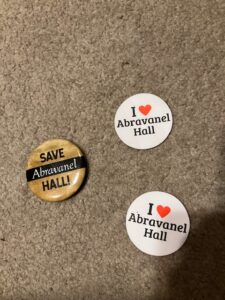
Abravanel Hall swag, including buttons and stickers
As the ICSOM Alternate Delegate, I felt compelled to tell our story to delegates of the recent ICSOM conference in August in Portland, Oregon. The response was phenomenal, and newly elected MAL Rebecca Matayoshi from the Hawaiʻi Symphony Orchestra created an online campaign to have orchestras make a short video showing their support. While this campaign came late in the process, ICSOM’s initial support was invaluable.
Everyone was encouraged to be involved in the process of saving the hall. Our Campaign Committee printed buttons and stickers to hand out to everyone (thanks to Matt and Tina Johnson!) We also printed cards (distributed at the ICSOM conference) with QR codes to sign the petition and to the county mayor’s office, where individuals could write letters of support to save the hall.
As a member involved in many aspects of the community, I was able to reach out and distribute pins and buttons to many different communities in the city, including a “I ❤️ Abravanel Hall” poster to Carolyn Abravanel, widow of Maurice Abravanel, for whom the hall was named.
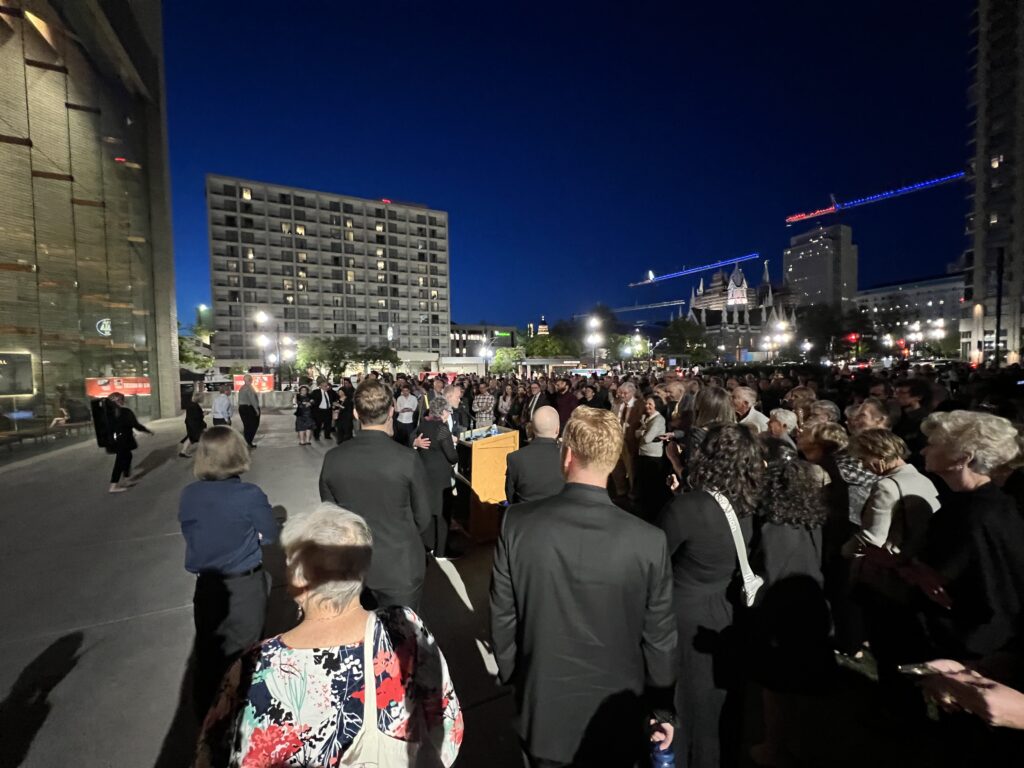
Carolyn Abravanel, widow of Maurice Abravanel, speaks at the lectern at a gathering at Abravanel Hall on May 17, 2024. The night’s rally in support of the hall included the lighting of the Maurice Abravanel Hall sign for the first time.
Photo Credit: Yuki MacQueen
The Outcome
On October 1, Salt Lake City Council approved a project area for the sports and entertainment district downtown that included the preservation of Abravanel Hall. The resolution was unanimously adopted by the council and recognizes the importance of Abravanel Hall as a cultural and architectural icon in the city’s cultural and entertainment district and includes plans for its renovation—in its current location.
Special thanks to Lori Wike for her timeline of events used in compiling this article and for her tireless expenditure of time and money to preserve Abravanel Hall. When I spoke with Lori, it struck me that she said, “The fact that we were in a union allowed us to fight this fight and it was all the musicians driving the bus with some board members behind the scenes. It couldn’t have been done without the community support. So it was a coalition as well as this broader community support.
“It’s about what musicians can do when you band together and you work really really hard because it was virtually impossible and yet somehow we did it,” remarked Wike.
But in terms of the people who did a massive amount of work, it was always the musicians, and it’s still not entirely over. “This story is still being written with twists and turns next year—once this gets to the state level,” remarks Carrick.
Wyatt notes further, “Our job now is to continue to keep our audience informed and engaged as we ensure a proper renovation that honors our beloved Abravanel Hall’s past while making it ready for our orchestra’s bright future.”
- Orchestra Committee Chair Karen Wyatt (right) presents an orchestra photo to County Council Member Dave Alvord and his Senior Policy Advisor Corrine Johnson
- Orchestra Committee Chair Karen Wyatt presents a photo of the Utah Symphony to Salt Lake City Councilman Jim Bradley


